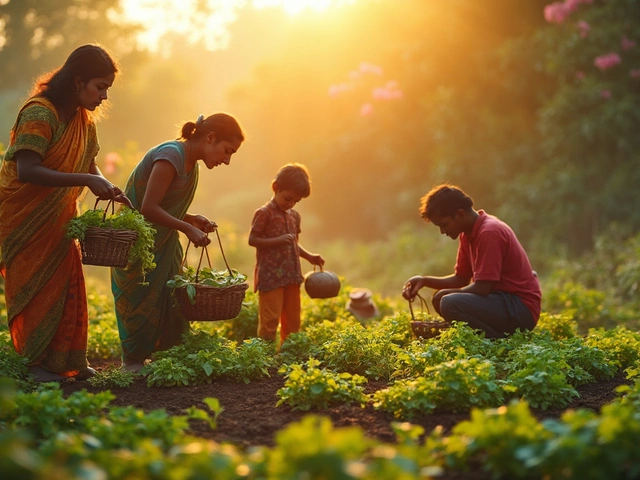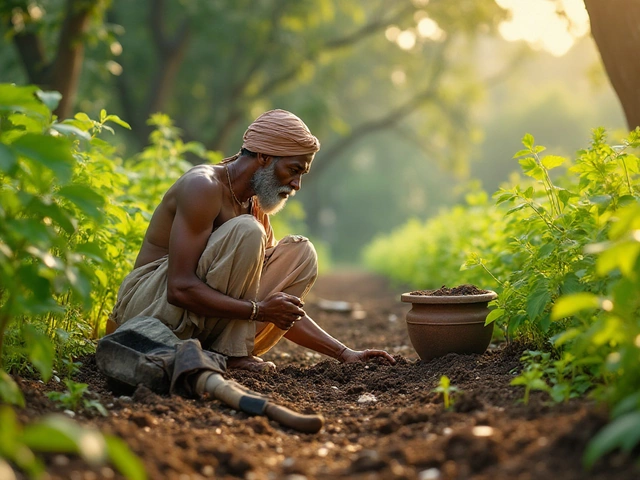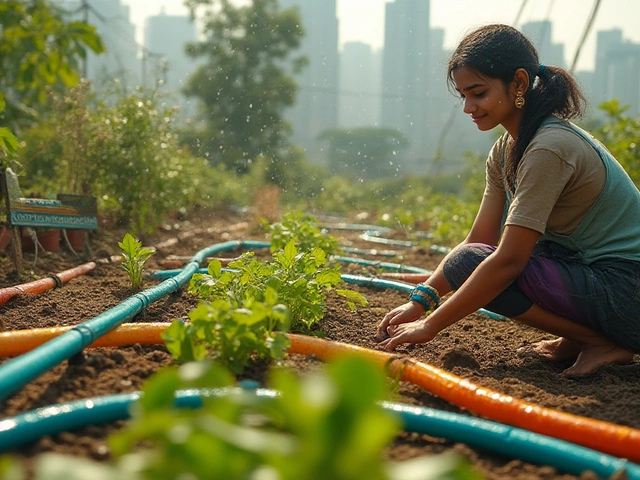Fertilize Tomatoes: Simple Tips for Bigger, Tastier Harvests
If you want plump, red tomatoes, feeding the plants right is key. Most gardeners think watering is enough, but soil needs the right nutrients at the right time. Below you’ll find a no‑fuss plan that works for any Indian garden – whether you grow in pots, raised beds, or a backyard plot.
When to Start Feeding
Start feeding as soon as you plant seedlings. A light dose of balanced starter fertilizer (10‑10‑10) mixed into the planting hole gives seedlings a boost. If you use seedlings from a nursery, they often come with a bit of starter in the pot, so you can skip the extra dose unless the soil looks poor.
After the first true leaves appear, give a second light feeding. This early feed helps develop a strong root system and prepares the plant for the next growth stage. From here, move to a regular schedule: every two weeks until the first flowers appear.
What to Use and How Much
Tomatoes need three main nutrients – nitrogen (N) for leaf growth, phosphorus (P) for root and flower development, and potassium (K) for fruit quality. In the early stage, a fertilizer higher in nitrogen, like 20‑10‑10, works well. Use about 1 kg per 10 m² or 1 tbsp per 5 L of water for potted plants.
Once flowers form, switch to a lower‑nitrogen, higher‑potassium mix such as 5‑10‑20. This stops the plant from growing too much foliage and pushes energy into the fruit. If you prefer organic options, mix compost with bone meal (P) and wood ash (K). A handful of compost plus a teaspoon of bone meal per plant does the trick.
Don’t forget micronutrients. A pinch of Epsom salt (magnesium) every month helps prevent blossom‑end rot, a common problem in hot Indian summers.
Watering and feeding go hand‑in‑hand. Apply fertilizer with the water so nutrients reach the root zone. Avoid splashing leaves – it can cause leaf burn.
Watch the plant. Yellowing leaves usually mean too much nitrogen; small, pale fruits can signal a potassium shortfall. Adjust the mix based on what you see, not just a fixed schedule.
With these simple steps – starter feed, regular balanced feeding, a switch to fruit‑focused fertilizer, and a bit of organic boost – your tomato plants will stay healthy and produce a generous harvest. No fancy chemicals, just plain, practical care that fits any Indian garden.

How Often Should I Fertilize Tomatoes? Simple Timing for Big Harvests
Getting the timing right for fertilizing tomatoes can mean way more fruit and fewer plant headaches. This guide breaks down exactly when and how often tomatoes need feeding to keep them healthy and productive. You'll learn how to spot the signs that your tomatoes are hungry, and avoid common fertilizer mistakes that kill yields instead of boosting them. We’ll also look at quick, practical tips to handle real garden situations, like container tomatoes or tricky soils. Tomato success starts with the right feeding routine—and you’ll find all the need-to-know details here.
About
Soil Improvement
Latest Posts


Revitalizing Old Soil: Tips for a Thriving Garden
By Alden Thorne Jan 16, 2025

Main Types of Drip Irrigation: Surface vs. Subsurface Explained for Gardeners
By Alden Thorne Jul 14, 2025

Discovering Asia's Largest Flower Market in India
By Alden Thorne Feb 25, 2025
